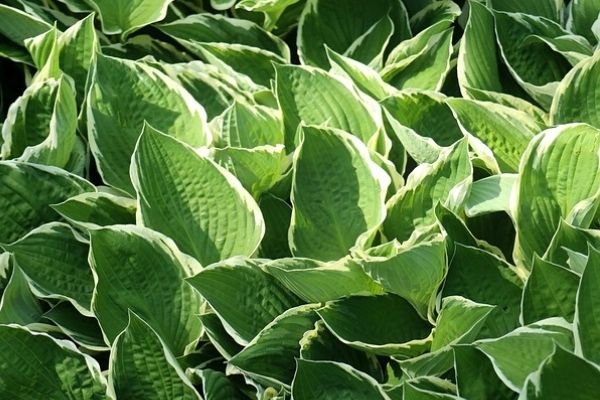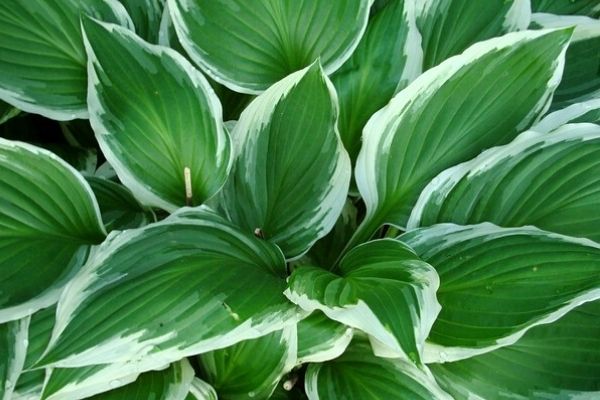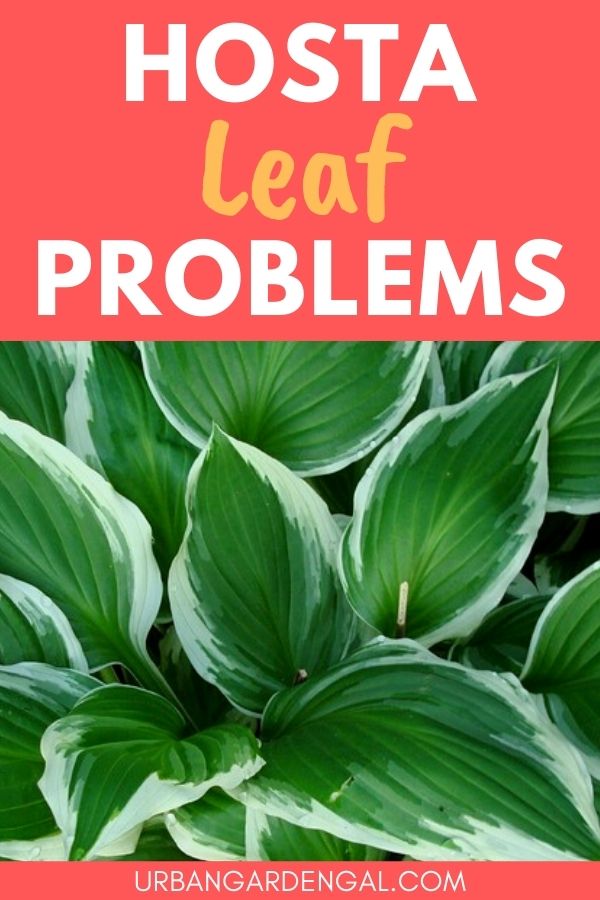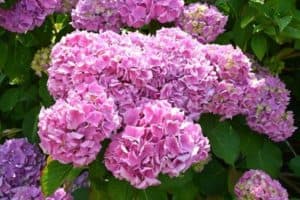Drooping or wilted hosta leaves are a definite sign that the plant is struggling and needs urgent attention.
In this article I’ll explain what makes hosta leaves wilt and some easy ways to save your hosta plants when they’re drooping.
This post contains affiliate links. Please read the disclosure for more info.

What causes hosta leaves to wilt?
Not enough water
Hosta plants need to be watered twice to three times a week during the summer months, reducing to once a week in the cooler months, depending how much rain you’re receiving.
Hostas planted in pots dry out a lot quicker so they may need watering every day or two in the summer months.
If your plants are wilted due to dryness, then they may just need some extra water or mulch to help retain moisture in the soil.
Overwatering
Hostas can also become wilted if they’re overwatered, especially if the soil has poor drainage.
Many times they droop because the soil is so saturated with water that there is no air available for the plant’s roots.
Hosta leaves will turn yellow and droop when they’re watered too often.
Consistently waterlogged soil can lead to root rot and other fungal diseases so be careful not to overwater your hostas.

Too much sun
Hostas that are planted in an area that receives full sun are likely to wilt and the leaves may become scorched.
If your hosta is wilted from too much sun, you’ll need to transplant it to a shadier location and give it a thorough watering.
Leave the damaged leaves in place until the new leaves come through.
Transplant shock
A wilted, limp looking hosta plant that has recently been repotted or transplanted out to the garden may be suffering from transplant shock.
This happens when the roots can’t draw up water and nutrients properly due to damage during the transplantation process.
To reduce the likelihood of transplant shock it’s best to transplant hostas late in the evening when the temperature is cooler.
It’s also a good idea to give hostas a deep watering the day before you transplant them.
This allows the plants to store enough water to sustain them while the roots are settling into the new spot in the garden.
Frost damage
Hosta leaves can be damaged by hard frosts but they’ll regrow when the temperature warms up.
Leave the frost damaged leaves on the plant until the new leaves appear.

Pests and diseases
If you notice any wilted leaves on your hostas but there are no signs of pests, then your hostas may have a fungal disease.
To reduce the likelihood of fungal diseases, allow adequate spacing between the plants, avoid wetting the leaves when watering and don’t mulch right to the base of the plants.
Sclerotium blight
This fungal disease spreads from the lower leaves to the upper leaves, causing wilted, brown leaves.
The fungus lives in the soil beneath the mulch, so try to keep the mulch away from the base of the plant.
Crown Rot
Crown rot caused by the Phytophthora species is most common in waterlogged soil.
It causes yellow, wilted hosta leaves, stunted growth, and root rot.
Petiole rot
Petiole rot is another fungal disease caused by the pathogen Sclerotium rolfsii.
It causes the leaves to wilt and turn yellow before dying off.
The best way to treat a plant that has a fungal problem is to remove the wilted leaves and spray the rest of the plant with a fungicide spray.
If you’re repotting or transplanting a hosta, check the roots of the plant for signs of rotting and remove any damaged roots.
Aphids
Aphids are small, green insects that mostly affect the leaves and flower buds.
Heavy aphid infestations that are left untreated can damage hosta leaves, causing them to become deformed, wilted and turn yellow.
To get rid of aphids naturally on hostas you can spray them with soapy water, hose them off or introduce some lady beetles to eat the aphids. [1]
Avoiding wilt in potted hostas
Use a high quality, easily draining potting soil and ensure that the container has drainage holes in the bottom.
Situate the pot somewhere in the garden that receives dappled light or partial sunlight during the day.
Keep the soil moist but not waterlogged.

RELATED ARTICLES
So there are some of the common causes of wilting hosta plants.
Once you know what is causing limp hosta leaves you can take steps to save your plants.
Have your hostas become wilted or droopy? Were you able to save them? Let me know in the comments below.






I recently bought some Hostas, the minute I planted them they drooped. Yes, we had a cold snap, and I thought that was it, but they have not revived. I will continue to water lightly, but I thought that Hostas were hardy plants- not subject to drooping so easily.